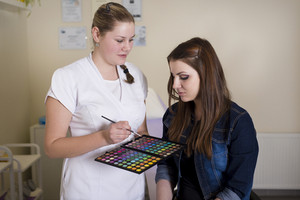
Acne is a skin condition that can affect any part of the body. It is usually characterized by red bumps and inflamed areas on the face, neck or upper torso. These can become painful, swollen and even bleed if not treated properly. There are many treatments available to treat acne, from creams to pills. Some of these treatments can be expensive and painful. Others may cause more harm than good. This article discusses some of the most common treatments for acne.
Treatments For Acne
1. Antibiotics
Antibiotics are used to treat bacterial infections. They can also be used to treat acne because they kill bacteria. However, antibiotics can be very harmful when taken incorrectly. The wrong dosage can cause the bacteria to develop a resistance to the antibiotic. This can make the infection worse. Additionally, antibiotics can have side effects such as diarrhea, nausea, vomiting, and loss of appetite.
2. Benzoyl Peroxide
Benzoyl peroxide is a chemical that has been used to treat acne for decades. It works by killing the bacteria that causes acne. The problem with benzoyl peroxide is that it is a strong oxidizing agent. This means that it can damage healthy cells and cause severe irritation to the skin. It also has a high risk of causing birth defects in pregnant women. Benzoyl peroxide should only be used in conjunction with other treatments for acne.
3. Retinoids
Retinoids are similar to vitamin A. They are often used to treat acne because they help reduce inflammation and prevent the skin from becoming dry. Retinoids can also help to reduce scarring. However, retinoids are highly toxic and can cause birth defects. They should only be used with caution.
4. Topical Treatments
Topical treatments for acne are creams and lotions. These can contain salicylic acid, which is a mild antibacterial and keratolytic. Salicylic acid helps to reduce the size of the acne. It also helps to reduce the inflammation. Topical treatments for acne are usually applied directly to the skin. However, they may also be applied to the hair. This is called the occlusive method. The occlusive method can be applied to the face and other parts of the body.
5. Oral Treatments
Oral medications are used to treat acne. These include oral antibiotics and oral retinoids. Oral antibiotics work by killing the bacteria that causes the acne. Oral retinoids work by reducing the production of sebum, which is a substance that clogs the pores and causes acne. Oral medications for acne can be very expensive. In addition, they can have many side effects, including liver damage, heart problems, and birth defects.

6. Hormonal Treatments
Hormonal treatments for acne are used to treat the symptoms of acne caused by excess hormones. They are used to treat acne in women who are pregnant or men who are taking testosterone. Hormonal treatments for acne can also be used to treat the symptoms of premenstrual syndrome (PMS). Hormonal treatments for acne can be dangerous to both mother and baby.
7. Laser Treatment
Laser treatment for acne is used to destroy the oil glands that cause acne. This method is generally used to treat cystic acne. It is also used to treat inflammatory acne and to reduce the size of existing acne lesions.
8. Surgery
Surgery is used to treat acne. It is used to remove the cysts and nodules that cause acne. It is also used as a cosmetic procedure to reduce the appearance of acne scars. Surgery can be very painful and can leave scars. It is also very expensive.
9. Natural Treatments
Natural treatments for acne are usually not recommended for treating acne. Natural treatments for acne are usually used as an alternative to other treatments. They are used to treat the symptoms, rather than the causes, of acne.
